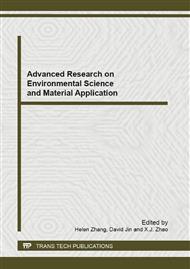p.166
p.170
p.174
p.178
p.182
p.186
p.190
p.194
p.199
Preparation of Advanced Activated Carbon from Low Ash Shenmu Coal
Abstract:
By comparing two kinds of coal in the preparation of activated carbon, Shenmu coal and Shenmu low ash coal, this paper discussed the advantages of low ash coal in preparing activated carbon, as well as the influence of the carbonization temperature, the activation temperature, the activation time, and the steam flow on the performance of coal activated carbon. Key words: activated carbon, ash content, iodine value, pore structure
Info:
Periodical:
Pages:
182-185
Citation:
Online since:
November 2012
Authors:
Keywords:
Price:
Сopyright:
© 2012 Trans Tech Publications Ltd. All Rights Reserved
Share:
Citation:


